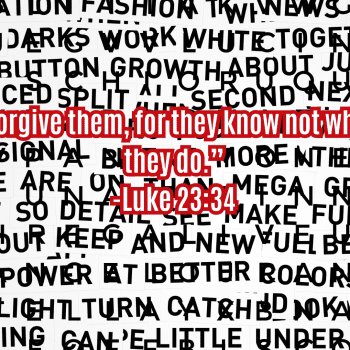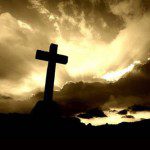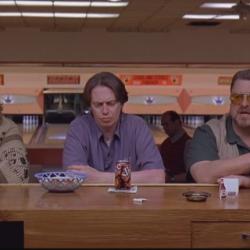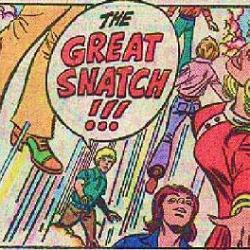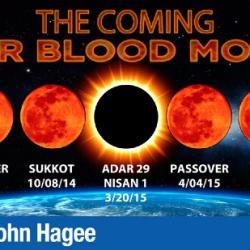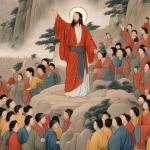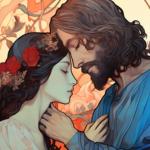Tribulation Force, pp. 73-74
Usually the organist began playing near the end of Bruce's prayer and Bruce immediately headed to the back of the church where he shook hands with people as they left. But today Bruce didn't get as far as the aisle before he was stopped by people who embraced him, thanked him and began asking questions.
My best friend's dad was our church organist when I was a kid. He called this background accompaniment to the pastor's prayer "noodling." It's a tricky form of musical improvisation — like scoring a movie you've never seen, live, without any clue as to the plot or when it might abruptly end. It's a kind of liturgical jazz.
The hard part, my friend's dad said, was trying to guess where the pastor was heading, to figure out whether you needed to extend the particular musical phrase you were playing or if you should move on to another one. It requires a nimble touch, a familiarity with the pastor's habits and patterns of speech and an extensive vocabulary of snippets of hymns and fourfold and sevenfold "Amens" that can quickly be switched into two-and-a-half-fold amens if the prayer takes a sudden turn.
Noodling is an art form. My friend's dad was a master at it, but he'd been doing it for decades. At New Hope Village Church on the third Sunday of the Apocalypse, Bruce Barnes would be offering only the third benedictory prayer of his short career in the pulpit, accompanied by a neophyte organist who's still probably trying to figure out the pedals and stops of an unfamiliar instrument. I can't imagine they'd be at all in synch or that this would sound pleasant, let alone appropriately reverential.
We readers aren't supposed to notice that. We're supposed to, like the authors, pretend that everyone at NHVC is completely accustomed to what "usually" happens there on a usual Sunday morning. We're supposed to forget that this is a brand new congregation, still struggling to learn the unfamiliar forms, customs and conventions of the worship service Bruce, Rayford and Loretta remember from back before the Rev. Billings and the rest of the usual congregation dissolved into thin air. Since those customs and conventions are familiar to the intended readers of the book, those readers are supposed to assume they would also be wholly familiar to this assembly of traumatized strangers and newcomers who have somehow in the wake of global and personal tragedy stumbled into this building at this hour in the hopes of making sense of it all.
The one thing here that inadvertently rings true is the way the new members stop Bruce in the aisle. Why shouldn't they? How would they know this violated the unwritten customs of the "usual" service?
Bruce ends in prayer just the way Pastor Billings always did, and he begins his best imitation of Billings' formal way of striding to the back of the church, expecting to stand by the door as Billings would have, shaking hands and engaging in polite small talk with the departing congregation. I can see why Bruce would seek comfort by clinging to what is, to him, a time-honored ritual, but it seems insane of him to expect that this room full of people who had never before seen all of this would know how to play along, or that they'd be willing to after all they've been through in the past three weeks.
These newcomers have just lost their children. And then they lost their country. And Bruce just spent the last two hours confirming that, yes, it's the End of the World. Of course they're not going to politely file out past Bruce, exchanging pleasantries.
These newcomers, like the organist and the church secretary and every other creature at NHVC apart from Loretta and our four protagonists, remain amorphous, nameless, nondescript creatures. But at least here a few of them have speaking parts:
"Are you saying that Nicolae Carpathia is the Antichrist?" one asked.
"Did you hear me say that?" Bruce said.
"No, but it was pretty clear. They're already talking on the news about his plans and some sort of deal with Israel."
"Keep reading and studying," Bruce said.
"One" is right, it was pretty clear that this was what Bruce was suggesting. Yet he sticks to his weird pretense of refusing to say as much to this congregation desperately seeking answers from him. Nicolae is slouching toward the throne of global tyranny and Bruce is wasting his congregation's time with hints and unnecessary word games.
Contrast Bruce's slippery, abstract coyness with the pragmatic urgency of the so-called mini-Apocalypse of Matthew 24:
When you see standing in the holy place "the abomination that causes desolation," spoken of through the prophet Daniel — let the reader understand –then let those who are in Judea flee to the mountains. Let no one on the roof of his house go down to take anything out of the house. Let no one in the field go back to get his cloak.
Nothing coy or cagey about that. When the time comes, Matthew's Gospel reports Jesus as saying, head for the hills and don't be slow.
The way Bruce sees it, he and his congregation have 18 months to get ready so they won't have to go back to get their cloak. He should have them all stocking up on canned goods and survivalist gear. They should be cashing out their 401(k)s and plundering the Egyptians by taking out 8-year, balloon-payment loans from Stonagal's banks. But instead of helping them to get ready because time's a wasting, Bruce gives them a sermon decrying the evils of liberal hermeneutics and the importance of eschewing symbolic readings.
We should note here that the meaning of that phrase quoted in Matthew 24 — "the abomination that causes desolation" — depends on how we read the book of Daniel.
For Tim LaHaye, Daniel should be read the same way he reads all of the Bible — as a list of signs, omens and predictions of specific, future events that will occur in the End Times. LaHaye and his premillennial dispensationalist cohorts thus take this passage from Daniel to be about the One who is, for them, the central, pre-eminent figure in all of scripture: the Antichrist. They believe that the author of Daniel and Jesus are both foretelling a time, thousands of years in the future, when the Antichrist will desecrate the Temple in Jerusalem.
For contemporary PMDs this presents a problem, as the Temple in Jerusalem was destroyed by the Romans 1,939 years ago. To Tim LaHaye, this suggests that the coming Antichrist will first have to rebuild the Temple just so that he can then desecrate it. This is one of the many subplots of the Left Behind series.
This interpretation requires a tricky bit of sleight of mind on LaHaye's part. He says the future Antichrist will desecrate the Temple because just such a desecration is what that passage in Daniel refers to — specifically the erecting of a statue of Zeus in the Temple by the Greek conqueror Antiochus IV Epiphanes around 167 BCE.
But at the same time — and here's where it gets tricky — because LaHaye wants Daniel to refer to the future Antichrist, he insists that this reference is in no way about Antiochus Epiphanes. You see the difficulty here? The book of Daniel can't very well be prophesying that the Antichrist will one day come and do exactly what Antiochus did unless the book also acknowledges what it was that Antiochus did.
Part of the reason LaHaye's reading of Daniel undoes itself is that he, like many evangelicals, wants to insist that because that book is set during the Babylonian exile, it must therefore have been written at that time. You know, just like Ben Hur was written
in the first century and then later translated into English by
Lew Wallace in the 19th.
Daniel makes a lot more sense when one acknowledges when it was written and why its author chose to set his or her story centuries earlier. It was written amidst the turmoil and oppression of the conquest of Jerusalem by Antiochus IV Epiphanes. The book's Babylonian setting thus conveys one of it's main themes. Antiochus is like Nebuchadnezzar. Babylonians, Medes, Persians, Seleucids — what is happening now is what has happened before and what will happen again and again. The author skips between past, present and future to remind readers that the rider on the white horse is not some abstract figure of a distant future prophecy but rather, like the rider on the pale horse, an ever-present, constant feature of history. This generation shall not pass till all these things be fulfilled. No generation will.
This is how Jesus treats the book of Daniel in Matthew's Gospel. "Remember Nebuchadnezzar and Antiochus?" he says. "Don't expect Caesar to be any different."
While we're off on this tangent, let me say a word on behalf of Antiochus IV Epiphanes. He was a believer. His faith had been confirmed through military victory — what surer sign could there be of divine blessing than the successful slaughter and subjugation of one's enemies? — and thus he was certain that his was the one, true god.
He therefore saw no need to tolerate the worship of false gods or to allow their places of worship to stand. The way he saw it, he wasn't desecrating the Temple in Jerusalem, he was consecrating it to the true god who had proven his might in battle as any true god must.
I don't say this to defend AE or in any way to try to justify his actions. What he did was, as the author of Daniel says, an abomination. But he wasn't the first or the last to commit this sort of abomination in the name of fealty to the one, true faith. The way Antiochus saw it, victory gave him the right to establish his religion as the only game in town and every other faith, every other worship, would have to be replaced.
Antiochus IV Epiphanes, in other words, could be seen as the patron saint of America's religious right.
The Left Behind series might have been a lot more interesting if Nicolae Carpathia had been written a bit more like Antiochus. LaHaye & Jenkins portray their Antichrist as a diabolical figure intent on rebuilding the Temple only so that he might, later, gleefully desecrate it. How much more interesting Nicolae might have been had he been portrayed as someone who viewed that desecration as a form of consecration.
Anyway, the still forming congregation of New Hope Village Church has questions, but Bruce is determined not to provide them with answers. Instead, he decides to provide them with an illustration of how the Socratic method, when poorly applied, comes across as annoying and aggressively condescending:
"But it can't be Carpathia, can it? Does he strike you as a liar?"
"How does he strike you?" Bruce said.
"As a savior."
"Almost like a messiah?" Bruce pressed.
"Yeah!"
"There is only one Savior, one Messiah."
"I know, spiritually, but politically I mean. Don't tell me Carpathia's not what he seems to be."
"I'll tell you only what Scripture says," Bruce said, "and I will urge you to listen carefully to the news. We must be wise as serpents and gentle as doves."
"That's how I would have described Carpathia," a woman said.
"Be careful," Bruce said, "about ascribing Christlike attributes to anyone who doesn't align himself with Christ."
OK, first off, "wise as serpents and innocent as doves" is not a description of Christ. It's Christ's admonition to his disciples as he commissions them, sending them out "like sheep among wolves." This is one of my favorite phrases from the Gospels, so I really wish Bruce hadn't tried to quote it here. He always makes such a mess of things.
But what's really astonishing here is what we find if we try to unpack what it is Bruce is saying about being "aligned with Christ."
This alignment has to do with an explicit expression of loyalty, a kind of pledge of allegiance. It has to do with the claims we make about ourselves.
The universe of Left Behind is a Manichaean realm populated only by the blameless and the unregenerate and everyone in these books is aligned with one side or the other. (The presence of children might have muddied the clarity of that scheme, so the authors dispensed with them in the first chapter of the first book.) The difference in this world between the Children of Light and the Children of Darkness is this matter of alignment, of expressing a choice for one side or the other.
This becomes much more explicit later in the series when we come to the Mark of the Beast. Such symbols matter in terms of expressing one's alignment. Words matter — to be aligned, in the sense that Bruce uses it here, is an almost wholly verbal thing.
But deeds do not matter.
Here again we find the further mutation of the "Faith vs. Works" dualism that pervades these books. We are who we claim we are, these books insist. What we do has no bearing on those claims. Beliefs and deeds are as far removed as the East is from the West.
Thus the South African churchman who turned away a young Indian lawyer because of the color of his skin was aligned with Christ. He was a churchman, after all, in good standing. That young lawyer never returned to the church that refused him, so Mohandas K. Gandhi was not aligned with Christ and, according to L&J, we should be careful not to attribute any "Christlike attributes" to him.
The Gospels do record Jesus as saying something that might be taken as a reference to this matter of alignment as Bruce understands it. "Whoever is not with me is against me," Jesus says in the 11th chapter of Luke.
But the ninth chapter of that same Gospel has Jesus saying what seems like the opposite: "Whoever is not against you is for you."
We can't make sense of these two statements without noting the context of them. Jesus was talking about deeds, about what people were doing.
We saw some people healing the sick and casting out demons, the disciples tell Jesus, "and we tried to stop him, because he does not follow with us."
"Don't stop him," Jesus said. Healing the sick and liberating the oppressed, he reminds his disciples, is a Good Thing. Don't you dare interfere with someone doing such things just because they're not aligned with our little group here. You don't need a membership card to do the right thing, and claiming to have one won't help you if you don't do the right thing. What matters is what you're doing.
That's almost exactly the opposite of what Bruce Barnes seems to mean when he speaks of being "aligned with Christ."




